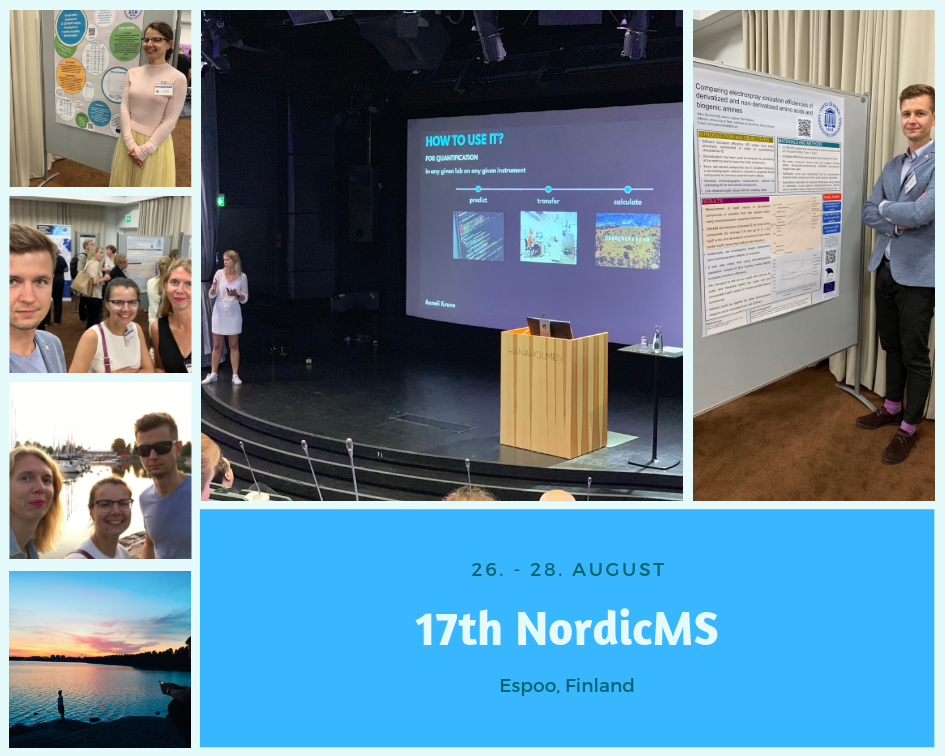This week the 17th Nordic Mass Spectrometry conference was held in Espoo, Finland. With around 150 participants form nordic countries, the conference covered various different topics within the field of mass spectrometry. I presented some of the most recent results from our group in the field of quantitative suspect screening for pesticides and mycotoxins. Also, from the analytical chemistry unit in University of Tartu Riin Rebane and Artur Gornischeff were presenting some very exciting results on the ionization studies.
NordicMS is a mass spectrometry conference taking place every three years and hosted in turns by nordic countries. This time it was Finland’s turn. The three-day conference had roughly 150 attendees; As expected, primarily from Finland and other Nordic countries. The conference covered all major areas of application of mass spectrometry: food characterization, metabolomics, drug discovery, proteomics, doping discovery and forensics. Unsurprisingly, the increasing popularity of non-targeted LC/HRMS screening was visible from the presentations. Prof. Marko Mäkinen showed the importance of non-targeted screening for characterization and product development of whiskeys, gins, and liqueurs, Prof. Kati Hanhineva used the non-targeted screening for understanding the health effect of the full-grain food products, and Prof. Jonas Bergquist used non-targeted screening alongside with classical targeted analysis for understanding the metabolomic changes associated with different diseases. Importantly, Prof. Bergquist stressed that currently, they primarily still relay on targeted analysis as understanding the metabolic pathways requires the availability of quantitative information.
Based on this input, I was very happy to present our recent work on making the non-targeted analysis quantitative without the need for a standard substance and its application to pesticide monitoring. More precisely, I showed the results of the first interlaboratory comparison of the quantitative non-targeted screening carried out by the Testing Centre of the University of Tartu and the National Food Institute at the Technical University of Denmark. During this interlaboratory comparison, we found that the predicted concentrations agree within the factor of 3 times. A big part of this work has been carried out by Tingting Wang from DTU in close collaboration with Dr. Jaanus Liigand from our group. My presentation is available here.


